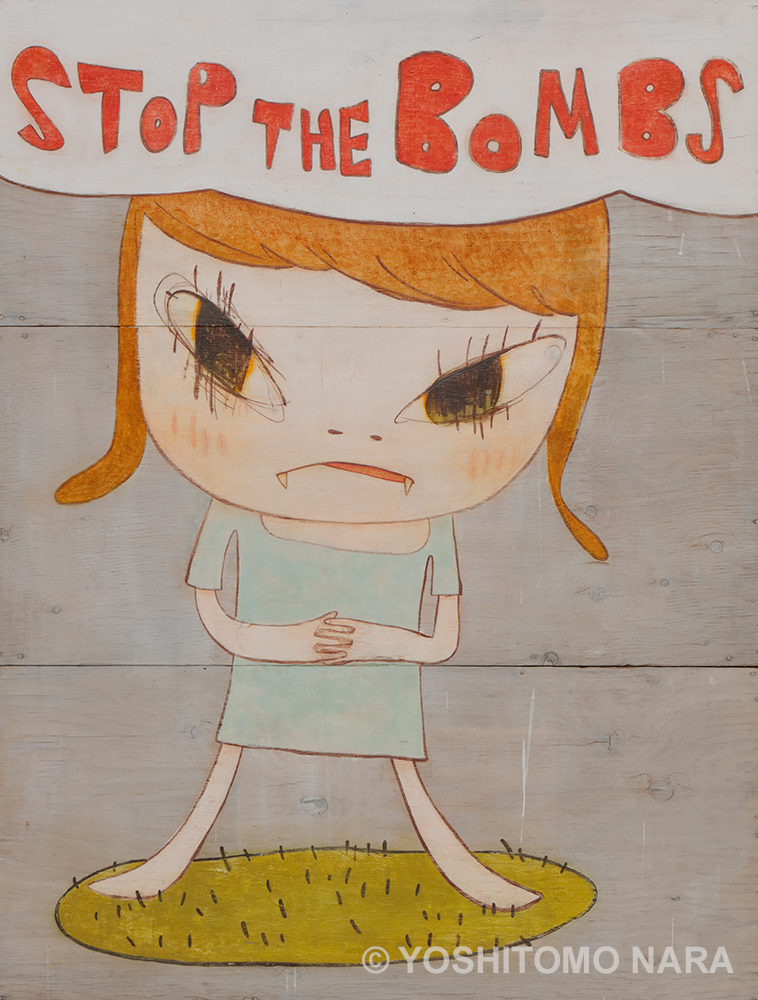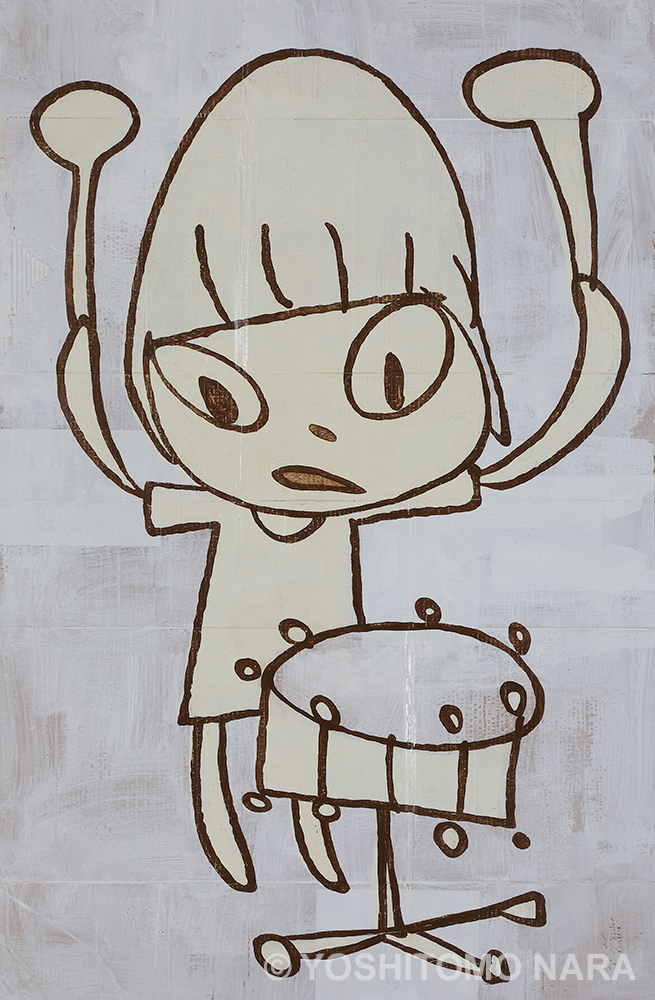Drawing the Lines and Advocating Peace
“At this very moment, somewhere in the world, a bomb is exploding.
New lives must be born in the midst of them.
I sincerely believe ‘STOP THE BOMBS!’”
Yoshitomo Nara
Drawing plays a central role within Nara’s practice. Throughout his career, he has sketched ideas on paper, cardboard, and wood—whatever material comes to hand—later turning some sketches into paintings. Drawing allows Nara to express his emotions with an immediacy that he is unable to replicate in painting. With pen or pencil, Nara captures the essence of what he finds remarkable and exciting in the world around him as he experiences it, especially when responding to music, his passion.
Nara grew up listening to music being broadcast on a US military radio station. He purchased his first record in 1967 and later discovered the flamboyant aesthetics of 1970s glam rock and the aggressive spirit of punk. His related drawings are a vivid evocation of the powerful effect music has on him, the bass guitar rhythms and fast-paced drumbeats. His drawings are a manifestation of his individual responses to sound and movement, which can be understood by everyone. They are visualizations of the thoughts that run through his mind when he listens. Events are shared in a way that makes us onlookers catching a live act. The dynamism of his animated characters embodies the musicians and our response is quite different to our engagement with his painted figures. Creating the outlines of his compositions for painting, Nara draws methodically and painstakingly, but to record his intuitive reactions he draws energetically and loosely.
Nara’s political awareness, humanitarian concerns, and anti-war position also have their roots in the counterculture and folk and blues music of the 1950s and ’60s, the sounds of the civil rights and peace movements. Nara has never seen active duty, but in 2002 he traveled to Afghanistan to document the war, responding to it in drawings as well as capturing it with photographs. Nara has never abandoned his social conscience. Since the Fukushima nuclear accident in 2011, Nara’s political stance has become increasingly overt in his artworks and he has been active in his support for global initiatives close to his heart, including the anti-nuclear lobby and campaigns to highlight environmental issues. Nara’s direct, accessible imagery, with its impactful and unequivocal political rhetoric has been taken up by protestors, who reproduce his images and unambiguous messages on their banners for demonstrations.
Drawing provides Nara with a level of freedom that he has not found in painting. He enjoys the possibilities of rapid execution and fluid delineation. But he also introduces this kind of definition and linearity back into his paintings, giving them a similar graphic quality in paint, using strong outlines and an economy of line.


